Review Article - Journal of Drug and Alcohol Research ( 2022) Volume 11, Issue 4
Preparations and Types of Local Traditional Alcoholic Beverage (Tella) in Amhara Region, Amhara, Ethiopia
Alemu Talema1* and Aschalew Nega22Department of Chemistry, Debark University, Ethiopia
Alemu Talema, Department of Chemistry, Injibara University, Ethiopia, Email: alemu212121@gmail.com
Received: 29-Mar-2022, Manuscript No. jdar-21-46678; Editor assigned: 31-Mar-2022, Pre QC No. jdar-21-46678 (PQ); Reviewed: 14-Apr-2022, QC No. jdar-21-46678; Revised: 19-Apr-2022, Manuscript No. jdar-21-46678 (R); Published: 26-Apr-2022, DOI: 10.4303/jdar/236173
Abstract
A historically fermented alcoholic beverage in a one of a kind location of Ethiopia has a protracted record and might range in alcohol contents, flavor taste, and kinds of color. The most common locally fermented alcohols in the country are Tella, Borde, Shamita, Korefe, Cheka, Tej, Ogol, Booka, and Keribo. Tella is a plant foundation indigenous conventional fermented alcoholic beverage and the maximum fed on a conventional fermented alcoholic beverage in Ethiopia. Raw substances like barley (Hordeum vulgare), wheat (Triticum aestivum), maize (Zea mays), millet (Eleusine coracana), sorghum (Sorghum bicolor), tef (Eragrostis tef), gesho (hops) (Rhamnus prinoides) are typically applied in Tella training relying upon the vicinity. Based on these raw material rations, alcohol contents, flavor taste and kinds of color is one of a kind among them. Even though a primary step of training of tella is similar, the procedure is barely distinction from one location to the alternative location inside the area of the country. The major goal of this evaluation is to revise the training and kinds of nearby beverages (tella) in the Amhara region, Amhara, Ethiopia. In this evaluation, there may be a minor change with inside the degree of training and at the color and taste alternate.
Keywords
Tella; Traditionally fermented alcohol; Ethiopia; Type; Beverage
Abbrevations
(SG) Specific Gravity; (RI) Refracrive index; (AC) Alcohol Contents; (TDS) Total Dissolved Solid; (TSS) Total Suspended Solid
Introduction
Worldwide, making and consuming of fermented drinks have a protracted record and are alleged to have taken region around 6000 BC [1,2]. Production techniques and intake of those conventional drinks are a lot restricted to a small location [3,4]. The old alcoholic beverage homework is in general a home phenomenon in Ethiopia. The conventional drinks enterprise inside the area isn’t nicely developed. Traditional alcoholic and non-alcoholic drinks like tella, tej, birz, borde, korefe, and areke are local to Ethiopia [5]. Beverages are liquid ingredients that supply nutrients. Like cereals, additionally, they offer power for human beings [6]. In Ethiopia, the conventional cereal primarily based alcoholic fermented drinks are nevertheless important in each rural and concrete society [7]. Cereals functions re-assets of food plan and such diets are maximum crucial re-assets of power, protein, B vitamins, and minerals for human beings. Ethiopian antique fashion fermented ingredients and drinks, without hesitation, are appropriate purposeful ingredients and wealthy in several probiotics [8].
These fermented drinks are normally organized from domestically current substances the use of classical techniques and their artwork is meant to by skip down via way of means of cultural and conventional values to consequent generations with the processing being optimized thru trial and error [8,9]. A sizable stage of local fermented alcoholic drinks is made of one of a kind uncooked substances for times from barley, maize, honey, and wheat in a one of a kind location of Ethiopia [10]. Native processing techniques of Ethiopian fermented drinks aren’t equal from locality to locality or from product to product [10-12]. Tella is known as Ethiopian conventional beer [13]. The production procedure of tella is similar to the beer making in that starch of the grain is transformed into sugars via way of means of malting. However, there may be no yeast inoculation section for fermentation however it makes use of the herbal yeast gift at the cereals [14]. In Ethiopia, local fermented drinks represent a first rate percent of the food plan of conventional Ethiopian homes, similarly additionally fed on one of a kind activities including holiday, wedding ceremony, and Iqub (a shape of conventional revolving saving wherein humans voluntarily be part of a set and make an obligatory contribution each week or pay a month) [15,16]. The nature of the training of Tella isn’t a lot complicated and it could arise inside the family from younger to antique girls however now no longer guys have participated in this training. In this training, the uncooked cloth ranges are randomly combined and the fermentation procedure began out without managed circumstance. The intake of Tella frequently takes region beneath situations of terrible hygiene [6]. As a result, the beverage will become of terrible first class with inconsistency and failure in maximum instances [12,16]. Because of its less expensive and little value than different trendy alcohol, tella has the excessive client in each city and rural location of the area, especially for low profits humans. Tella is specially fermented inside the rural location now no longer a lot fermented with inside the city location for one of a kind instances including holidays, wedding ceremony ceremonies, and crew works (Debo), and harvesting in their cereals. Their length relies upon their kinds of tella and parts of uncooked substances. In suitable air circumstances and dealing with, darkish brown tella is can take up to a few months without oxidizing or without converting its flavor of taste however white tella is used for one cycle (as soon as at a time) of fermentation because of its far without delay oxidized and its flavor of taste is modified to sour.
Partial darkish brown tella may be taken upon one vulnerable without oxidizing to acids on suitable dealing with and clean garage field. However, there may be no sufficient records to be had which can supply us records approximately the kinds of Tella and tiers of training in addition to the kinds of uncooked substances which might be used to put together home grown fermented drinks of Tella in the Amhara region, Amhara, Ethiopia. This evaluation makes a specialty of tiers of training and uncooked cloth used for 3 kinds of tella including white, darkish brown, and in partial darkish brown. So far, no observe has been carried out in this characterization of tella on this location. For this reason, due emphasis has been given to check the sorts and tiers of training of nearby beverage (tella) in the Amhara region, Amhara, Ethiopia. The intention of this evaluation, therefore, will offer clean records of approximate sorts in addition to suitable uncooked cloth kind and tiers of training of nearby beverage (tella) in Amhara region, Amhara, Ethiopia.
Types of tella
The maximum not unusual place kinds of tella with inside the Amhara region vicinity are white, darkish brown, and in part darkish brown (gerrima), and this differentiation befell primarily based totally at the tiers of training and presences/absences of uncooked cloth in every degree [13,17]. Dark brown Tella is broadly organized and utilized by society in a maximum of the vicinity however white and part darkish brown (gerrima) tella are localized and now no longer a lot utilized by society as darkish brown. In the conventional consideration, white tella has greater alcoholic contents than darkish brown and in part darkish brown (gerrima) tella and that is one cycle degree that cannot use for a protracted duration like darkish brown and in part darkish brown (gerrima) tella. Partially darkish brown and white tella is effortlessly oxidized to the acid and their flavor of taste is modified to the sour so that they may be used for one cycle tella training and now no longer saved for a protracted duration as darkish brown tella. Dark brown tella can remain from one to a few months on suitable air situations and garage containers (clay or plastic) without oxidized to acid and without alternate their flavor of taste. The maximum suitable field for tella to keep for a protracted time, the plastic field is greater advocated than clay field because of its far greater inert than clay. Clay field is effort-lessly reacted with the tella and it could be converting its flavor and maybe effortlessly oxidized to acids.
The type of tella that is traditionally fermented in the Amhara region is as shown in (Figure 1) below.
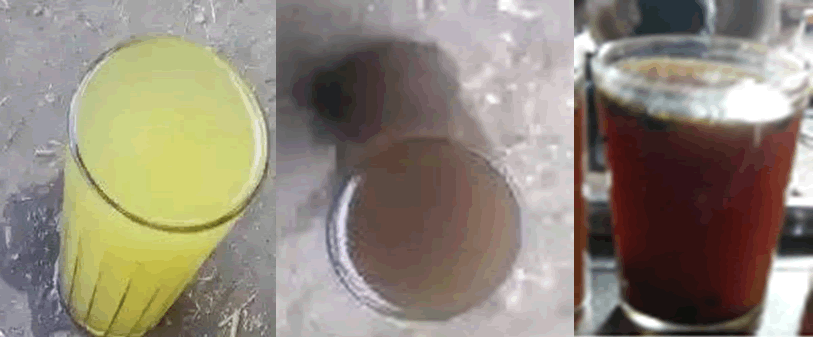
Figure 1: From left, white, dark brown, and part dark brown (gerrima) tella.
Traditionally fermented beverages of tella
The most commonly used upnative old style fermented alcoholic beverage in Ethiopia is Tella and which is the maximum sizable drink inside the Oromia, Amhara, and Tigray regions. Barley, wheat, maize, millet, sorghum, “teff” (E. tef), and “gesho” leaves (R. prinoides) together with naturally gift microorganisms are the elements used to provide Tella [1,4] (Table 1).
Table 1: Most common raw materials of tella.
| Wheat | Maize | Sorghum | Dagussa | Gesho | |||||||||
|---|---|---|---|---|---|---|---|---|---|---|---|---|---|
| Soaking | Derekot | Abishilo | Soaking | Derekot | Abishilo | Soaking | Derekot | Abishilo | Soaking | Derekot | Abishilo | ||
| White Tella | √ | - | √ | √ | - | √ | √ | - | √ | √ | - | √ | √ |
| Dark brown Tella | √ | √ | √ | √ | √ | √ | √ | √ | √ | √ | √ | √ | √ |
| Partially dark brown Tella | √ | - | √ | √ | - | √ | √ | - | √ | √ | - | √ | √ |
| Where, -=Not needed, √=needed | |||||||||||||
The ratio of training and kinds of uncooked substances to put together tella is range from one region to different region with inside the case of value, accessibility, the flavor of every last product, non-secular imaginative and prescient and different criteria. Some of the maximum not unusual place unique uncooked substances for a maximum of Tella manufacturing in Ethiopia are barley, dagussa, sorghum, teff, and maize ina one of a kind vicinity [9,16,18]. From the given raw material substances, barley, dagussa, sorghum, and maize are used as germinated (malting) grains [17]. A clay field (insera) or plastic jar, that is used for tella training, is normally wiped clean with water and leaves of grawa (Vernonia amygdalina) after which fumigated via way of means of the smoke of burning chips of woyira (Olea europaea) or tunigit (Otostegia –integrifolia Benth) to remove a few negative microorganisms and to get the favored taste of the fermented product for approximately 10–25 minutes [17,19]. There are numerous primary processing steps to get nicely fermented tella including soaking, roasting, grinding, preparation of abishilo, and derekote. Most typically, abishilo is ready from barley, dagussa, sorghum, and maize however derekot is ready from sorghum, and maize. The main ingredients required to preparing tella are shown in the (Figure 2).
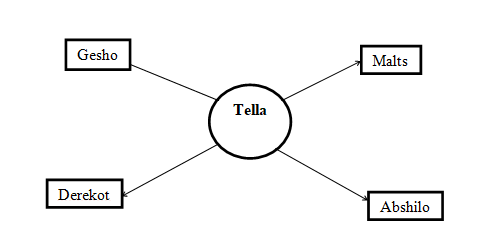
Figure 2: Main ingredients required to preparing tella.
“Gesho”(Rhamnus prinoides L.): is the maximum not unusual place element used to put together Ethiopian alcoholic liquids, by and large as a flavoring and bittering agent. The substance β-sorigenin-8-O-D-glucoside (“geshoidin”) is the naphthalenic compound answerable for bitterness. In addition to this, it’s also a supply of fermentative microorganisms and performs a massive function at some stage in fermentation in regulating the microbial dynamic. To govern the formation of the very bitter flavor because of the succeeding micro-organism at some stage in the tella fermentation, small elements of the tella are eliminated and are tasted. People upload the ash of burnt timber to neutralize the immoderate acid. The bitterness of tella is from gesho, at the same time as that of beer is from hops. Hops are the woman flora of the hop plant Humulus lupulus. They are used by and large as a flavoring and stabilizing agent in beer, to which they convey a sour, tangy taste. Hops also are used for diverse functions in various liquids and natural medicine. Historically, conventional herb combos for beers have been believed to be deserted while beers made with hops have been observed to be much less liable to spoilage. Leaves of gesho are much like hops in phrases of their function in brewing; giving a sour taste and antibacterial consequences for the shelf life. The foundation of using gesho in tella brewing in Ethiopia is misplaced in history (Figure 3).
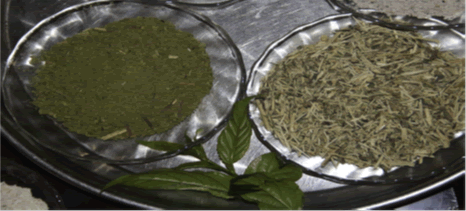
Figure 3: From the left, powdered leaves, leaves, and stem shreds of hops.
Soaking: Malt (bikil) is a main supply of the dominant yeast in tella and may be organized from one of a kind of grains. Malt is the first step and processing of germinating the raw materials like barley, wheat, dagussa, sorghum, or maize grains to prepare tella that depend on from which tella is fermented. Based on the time is taken, maize takes an extended length to germinate than one of a kind grains along with barley, dagussa or sorghum grains. Depends on the amount of tella fermented, maize is deep (moistened) in a plastic jar or clay pot that includes a huge quantity of water from 2 up to a few days. On the 0.33 day, the solvent is removed and after that, it lifts to 12 hours. Then, the maize is soaked thruway of smooth banana leaves appropriate area and saved in a dry area for an additional 5 to 6 days. Barley or sorghum grains are moistened for 24 hours and after 24 hours, the solvent is removed and after that, it lifts to 12 hours. Then, the barley or sorghum are soaked thruway of smooth banana leaves appropriatearea and saved in a dry area for an additional 4 to 5 days [4]. Dagussa is moistened for 24 hours and after 24 hours, the solvent is removed and after that it lefts to 12 hours. Then, the dagussa is soaked thruway of smooth banana leaves appropriate area and saved in a dry area for an additional 2 to a few days [4]. This soaking is for three primary reasons; the number one is to reduce the power/wood consumption sooner or later of cooking, the second; making geared up the sugar observed in barley for enzymatic or microbial action, and the 1/3, to get an identical distribution of heat sooner or later of roasting.
Then, the germinated barley, dagussa, sorghum, or maize grain are sun dried and ground to offer malt flour. Roasting: It can be very important to roasted barley, dagussa, sorghum, or maize grain thrumanner of way of firewood using Biretmitad (metal fabric used for roasting) to prepare excellent pounder/flour of grains referred to as derekot or to prepare enkuro [4,16]. Roasting has the precept benefits of identifying of the color of tella which can be a magnet for the customers/to have customers‟ great trendy. Over darkening of the roast may bring about a loss of the barley’s sugar content material and may cause the final product tella over darkish. Preparation of Abishilo: This is the precept detail to the tella preparations. Abishilo is prepared from the tella kitta or Enkuro. Enkuro is a prepared way of slightly roasted barley, sorghum, maize, and ground to the flour. After that, water is delivered to the flour to form in component moisture and saved for 3 days. Then the partial moisture flour is roasted and heat treatment as a great deal because the color modifications to shut to black for ease of fermentation (Figures 4 and 5).
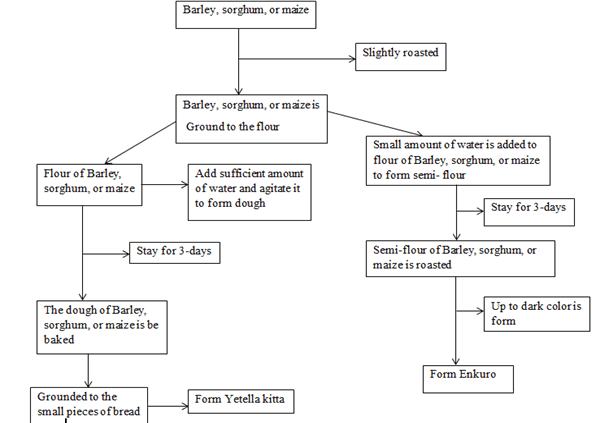
Figure 4: Abishilo processing flow chart by both Yetllakitta and Enkuro methods.
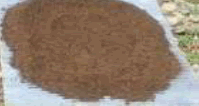
Figure 5: Enkuro.
Both enkuro and yetellakitta have equal software inside the tella training however their training is different. Yetella kitta is typically a black color and organized via way of means of barely roasted barley, sorghum, or maize and floor to the flour. Flour of roasted barley, sorghum, or maize grain is blended with a small share of water and maybe agitated nicely to shape the dough and stored for 3 days. After three days, the dough may be baked on a huge steel pan to produced unleavened bread domestically regarded as “Yetella kita” (a thin, five to ten mm thick, pancake like bread) (Figure 6).
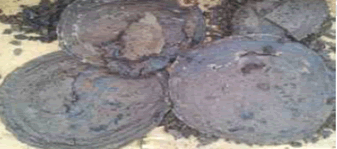
Figure 6: Yetelakitta.
After the baked bread is dried, then, it’s far grounded to the small portions of bread to make sugar equipped for S. cerevisiae for conversion to alcohol [16].
Preparation of derekot: The major uncooked substances for the training of derekot are sorghum, or maize. Depends on the amount of tella fermented, maize is deep (moistened) in a clay pot or steel jar that consists of a big amount of water from thirteen up to fifteen days. In 15 days, the solvent is eliminated and after that, it lifts to twelve hours. After that, the moistened maize is roasted via way of means of firewood the use of Biret-mitad (steel cloth used for roasting), and grinding the roasted maize to put together great pounder/flour of grains known as derekot. Like maize, sorghum is deep (moistened) in a clay pot or steel jar that consists of a big amount of water from 10 as much as eleven days. On the 11th day, the solvent is eliminated and after that, it lefts for twelve hours. After that, the moistened sorghum is roasted via way of means of firewood the use of Biret-mitad (steel cloth used for roasting) and grinding the roasted sorghum to put together great pounder/flour of grains known as derekot. This procedure is historically known as limit (Figure 7).
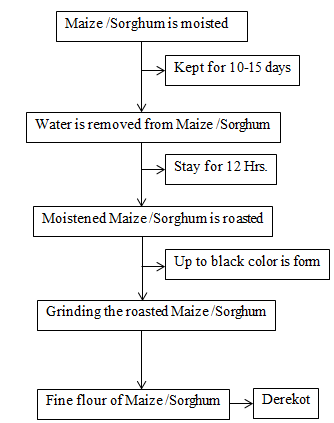
Figure 7: Derekot processing flow chart by limit methods.
Maize is blended with water in the suitable clay pot or steel jar and warmth is implemented for five hours and after that it drays for three days. On the third day, the maize is roasted via way of means of firewood the use of Biret-mitad (steel cloth used for roasting), and grinding the roasted maize to put together great pounder/flour of grains known as derekot. Sorghum is blended with water in the suitable clay pot or steel jar and warmth is implemented for three hours and after that it drays for three days. On the third day, the sorghum is roasted via way of means of firewood the use of Biret-mitad (steel cloth used for roasting) and grinding the roasted sorghum to put together great pounder/flour of grains known as derekot. This procedure is historically known as kikil (Figure 8).
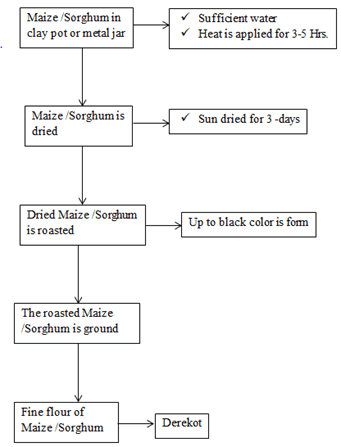
Figure 8: Derekot processing waft chart via way of means of kikil techniques.
The conventional fermentation procedure of tella The primary steps of tella training are essentially similar even though there may be a small distinction inside the procedure with inside the one of a kind location of the area. The making of “Tejet”, “Tenses” and “Difdif” are the essential steps inside the Tella training procedure [1,4]. The aggregate of sun dried steam and leaves of “Hops” (R. prinoides) is floor into the flour. Then, the flour of each Bikil and Hops are combined collectively about with inside the ratio of 3:1 with enough quantity of water in a nice smooth with girawa and smoked with tungite in conventional bioreactor regarded as “Insera” or Plastic jar. This aggregate is left to ferment for 3 (three) days to shape “Tejet” [4,7]. When Enkuro is blended with this Tejet that paperwork Tenses and continues in dray locations for five to eight days, that is the beginning shape of tella and it has a partially darkish brown color. This tella is historically known as Ye-enkuro tella and is one cycle tella due to the fact it’s far effortlessly oxidized to acids and now no longer saved for a protracted duration (Figure 9).
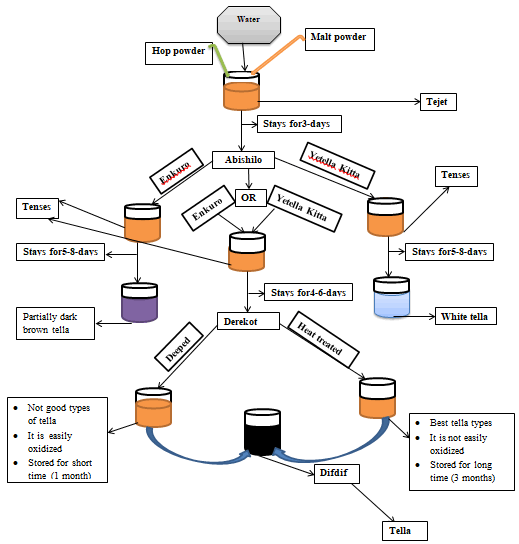
Figure 9: Tella processing flow chart.
When Yetella kitta is blended with this Tejet that paperwork Tenses and continues in dray locations for five to eight days primarily based totally at the climatic situations, which is likewise beginning shape of tella and it has white color. This tella is historically known as Nechie tella and is one cycle tella like Ye-enkuro due to the fact it’s far effortlessly oxidized to acids and now no longer saved for a longer duration. In the aggregate of tenses with Yetella kitta or Enkuro, Derekot is introduced to shape Difdif. This Difdif is shaped from both heat dealt with and deep uncooked substances of sorghum, or maize. When the difdif is shaped from the heat dealt with sorghum or maize, it’s far saved for a brief duration from one up to 2 months. But the Difdif is shaped from the deep sorghum, or maize, it’s far saved for a protracted duration from up to a few months, and now no longer effortlessly oxidized to acids. The Tella production process utilizes the natural microorganisms present in the ingredients for fermentation. Saccharomyces cerevisiae and Lactobacillus pastorianumi are the major organisms and S. cerevisiae is most important. The chemical equation below summarizes the conversion.

The production of alcohol occurs best in the absence of oxygen. However, from the yeast’s point of view, alcohol and carbon dioxide are waste products, and as the yeast continues to grow and metabolize in the sugar solution, the accumulation of alcohol will become toxic when it reaches a concentration between 14%-18%, thereby killing the yeast cells.
Comparisons of Physicochemical properties of alcoholic beverages of tella
According to [13], the pH value of tella, which has good quality, ranged from 4 to 5. Different investigators record different pH values of tella in different areas of the country. According to the pH value of tella that collected from the different areas of Jimma has ranged from 4.27 to 4.86 which is different from the [19] that range from 4.44 to 4.91 and also different from that ranging from the 3.87 to 5.03 as shown in (Table 2) below. This difference may come from the preparation of raw material differences between the households and preparation process differences. All of the tella investigated by the authors above are found in the normal and good quality ranges according to the [13]. The alcohol contents of each studied tella are different as shown in the table below. The variation in ethanol contents of traditional alcoholic beverages of tella might be due to differences in preparation and fermentation as is reported [7].
Table 2: Comparison of the physicochemical parameters of tella between different kinds of literature.
| Parameters | No. of Samples | pH | Alcohol contents (%) | Specific gravity (SG) | Refractive index (RI) |
|---|---|---|---|---|---|
| GizawDebebe | 1 | 4.78 | 8.03 | 1.00816 | 44.75 |
| 2 | 4.63 | 6.15 | 1.00933 | 40.95 | |
| 3 | 4.14 | 6.93 | 1.00834 | 42.05 | |
| 4 | 3.87 | 5.21 | 1.00093 | 30.18 | |
| 5 | 5.03 | 5.46 | 1.00081 | 30.6 | |
| Averages | 4.49 | 6.36 | 1.00551 | 37.71 | |
| Yohannes et al. | 1 | 4.27 | 4.41 | 1.0059 | 1.3379 |
| 2 | 4.86 | 3.91 | 1.0046 | 1.3373 | |
| 3 | 4.78 | 6.37 | 1.0046 | 1.3366 | |
| 4 | 4.75 | 6.17 | 1.0053 | 1.3378 | |
| 5 | 4.68 | 4.99 | 1.0091 | 1.3458 | |
| Averages | 4.67 | 5.17 | 1.0059 | 1.3391 | |
| YirgaAdugna et al. | 1 | 4.91 | 5.91 | 1.01 | - |
| 2 | 4.44 | 6.38 | 1 | - | |
| 3 | 4.62 | 6.2 | 1.01 | - | |
| 4 | 4.46 | 6.41 | 1 | - | |
| Averages | 4.61 | 6.23 | 1.01 | - |
According to [13], conditions such as temperature, aeration, and actions of the microorganisms also obviously affect the level of the alcohol in the samples of tella. According to [19], the statistical analysis revealed that ethanol level of tella prepared at the same place with different container showed variations which mean indirectly, the alcohol contents of tella may be affected by the container which is prepared.
According to the refractive index of tella which is collected from the different areas of Jimma has an average mean value of 1.3391 which is highly different from having an average mean value of 37.71. From the above table of literature data, the value of the refractive index shows that it relates with the alcohol contents which means that tella with higher alcohol content has a high refractive index.
Comparisons of Physicochemical properties of alcoholic beverages of tella with different alcohols
The important physicochemical characteristics are carried from different indigenous traditional alcoholic drinks compared to marketable tella are shown in (Table 3). Tej had a really small electrical conductivity value than other traditional alcoholic drinks. According to shamita had high electrical conductivity followed by borde. This high electrical conductivity indicates that the presence of a high quantity of mariners and mineral ions. Differences in the raw outfit (crop varieties); process conditions, fluid cocktails, depot time, and accouterments can create differences among the electrical conductivity values. Like electrical conductivity value, Shamita had a high total dissolved solid value followed by borde. Tella had an evolved conductivity and total dissolved solid value than tej. This indicates that traditional fermented tella had a significantly high quantity of dissolved solids than tej whereas the conductivity of Shamita, Borde, and Korefe were 8391, 7139, and 3199 μS/ cm separately. This indicates that Shamita had developed electrical conductivity value than the other traditional fermented alcoholic drinkables.
Table 3: Comparison of the physicochemical parameters of tella with other different kinds of traditional fermented alcoholic beverages.
| Beverages | pH | Ethanol level (v/v) | Conductivity (μS/cm) | TDS (mg/L) | TSS (mg/L) |
|---|---|---|---|---|---|
| Tella | 3.8 | 5.57 | 2359 | 1180 | 76900 |
| Borde | 3.5 | 3 | 7139 | 3830 | 16498 |
| Shamita | 3.8 | 3.23 | 8391 | 4520 | 11274 |
| Korefe | 3.7 | 4.43 | 3199 | 1610 | 5680 |
| Tej | 3.6 | 11.9 | 811 | 387 | 46750 |
| Reference | [33] | [36] | [33] | [35] | [35] |
Discussion
According to the tella had a slight measure of TDS value of 10.39 μS/cm than the other traditional fermented alcoholic drinkables in data. The choice solid content of drinkables is 500-2000 mg/L. As shown from Table 3, tej had a developed value of ethanol contents than other traditional fermented alcoholic drinkables followed by tella.
Conclusion
There’s significant variation in the alcohol contents between the traditional fermented alcoholic libations of tella and tej according. Conditions ditto as temperature, aeration, and strains of the microorganisms affect the reach of the alcohols. The wide variation in ethanol of different libation brands is related to the difference in sources raw paraphernalia (crop manners), the limit of standard procedures to produce traditional alcohols, alcohols process conditions, and the difference in pick competence conduct of the libations. There was also a significant difference in the pH value between the tella and borde. Preferred pH reaches of libations are 3.5-4.0. Predicated on the data, all traditional fermented alcoholic libations of tella, borde, shamita, korefe, and tej had compared pH values.
Acknowledgments
The author acknowledges Injibara University for his moral support. The author also acknowledges Fentahun Adamu for his support in writing assistance of this review paper.
Author Contributions
Alemu Talema has in the contribution of all the manuscript preparation, analyzed the data, and wrote the paper. Aschalew Nega carried out the manuscript drafting, data organized and editing the final paper.
Data Availability Statement
Research data are not available for this review paper.
Funding
No funding has been received to conduct this review paper.
Ethics Approval and Consent to Participate
The manuscript does not contain studies involve in human data, or human tissue.
Consent for Publication
Not applicable.
Competing Interests
The authors declare that they have no competing interests.
References
- B. Tekle, S.A. Jabasingh, D. Fantaw, T. Gebreslassie, S.R.M. Rao, et al. An insight into the Ethiopian traditional alcoholic beverage: Tella processing, fermentation kinetics, microbial profiling and nutrient analysis,LWT,107 (2019), 9-15.
- J.P. Tamang, Diversity of fermented beverages and alcoholic drinks,Fermented foods and beverages of the world, (2010), 85-125.
- E. Marshall, D. Mejia, Traditional fermented foods and beverages for improved livelihoods, FAO Diversification Booklet, 21(2011).
- E.G. Fentie, S.A. Emire, H.D. Demsash, D.W. Dadi, J.H. Shin, Cereal and Fruit Based Ethiopian Traditional Fermented Alcoholic Beverages,Foods,9(2020), 1781.
[Crossref] [Google Scholar] [PubMed]
- M. Ashenafi, A review on the microbiology of indigenous fermented foods and beverages of Ethiopia,Ethiop J Biol Sci,5(2006), 189-245.
- K. Abegaz, F. Beyene, T. Langsrud, J.A. Narvhus, Indigenous processing methods and raw materials of borde, an Ethiopian traditional fermented beverage,J Food Technol Afr,7(2002), 59-64.
- A. Getaye, D. Tesfaye, A. Zerihun, F. Melese, Production, optimization and characterization of Ethiopian traditional fermented beverage ‘Tella’From Barley,J Emerg Technol Innov Res, 5(2018), 797-799.
- T.G. Amabye, Evaluation of phytochemical, chemical composition, antioxidant and antimicrobial screening parameters of Rhamnus prinoides (Gesho) available in the market of Mekelle, Tigray, Ethiopia,Nat Prod Chem Res,3(2015).
- B.M. Abegaz, T. Kebede, Geshoidin: A bitter principle of Rhamnus prinoides and other constituents of the leaves.Bulletin Chem Soc Ethiop, 9(1995)
- H. Alemu, B.M. Abegaz, M. Bezabih M, Electrochemical behaviour and voltammetric determination of geshoidin and its spectrophotometric and antioxidant properties in aqueous buffer solutions,Bulletin Chem Soc Ethiop,21(2007), 189-204.
- De Keukeleire, Fundamentals of beer and hop chemistry.Quimica nova,23(2000), 108-112.
- A. Berhanu, Microbial profile of Tella and the role of gesho (Rhamnus prinoides) as bittering and antimicrobial agent in traditional Tella (Beer) production,Int Food Res J,21(2014)
- G. Tafere, A review on traditional fermented beverages of Ethiopian,J Nat Sci Res,5(2015), 94-102
- B. Belay, W. Awraris, Fermenter technology modification changes microbiological and physicochemical parameters, improves sensory characteristics in the ermentation of Tella: An Ethiopian traditional fermented alcoholic beverage,J Food Process Technol,5(2014).
- G.F. Eskindir, A.E. Shimelis, D. Hundessa, W.D. Debebe, S. Jae. Cereal and fruit-based ethiopian traditional fermented alcoholic beverages.Foods, 9 (2020), 1781.
[Crossref] [Google Scholar] [PubMed]
- S.S. Jahagirdar, V.K. Patki, R.M Thavare, Comparative study of water quality parameters of different brands of soft drinks. J Mech Civil Eng, 2(2015), 142–149.
- A. Fite, A. Tadesse, K Urga, E. Seyoum, Methanol, fuel oil and ethanol contents of some Ethiopian traditional alcoholic beverages. SINET Ethiop J Sci, 14(1991), 19-27.
- S.K. Tulashie, A.P. Appiah, G.D. Torku, A.Y. Darko, A. Wiredu, Determination of methanol and ethanol concentrations in local and foreign alcoholic drinks and food products (Banku, Ga Kenkey, Fante Kenkey And Hausa Koko) in Ghana. Int J Food Contam, 4 (2017), 1-5.
- M. Rajkovi, I.D. Novakovi, A. Petrovi, Determination of titratable acidity in white wine. J Agric Sci. 52 (2007):169-184.
[Crossref] [Google Scholar] [PubMed]
Copyright: © 2022 Alemu Talema Getahun, et al. This is an open access article distributed under the terms of the Creative Commons Attribution License, which permits unrestricted use, distribution, and reproduction in any medium, provided the original work is properly cited.

